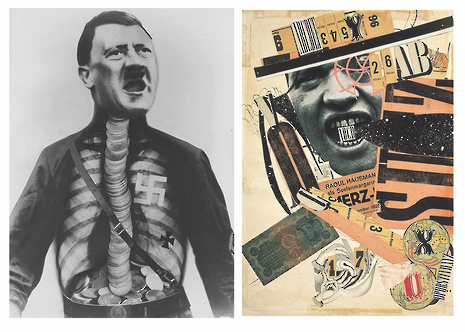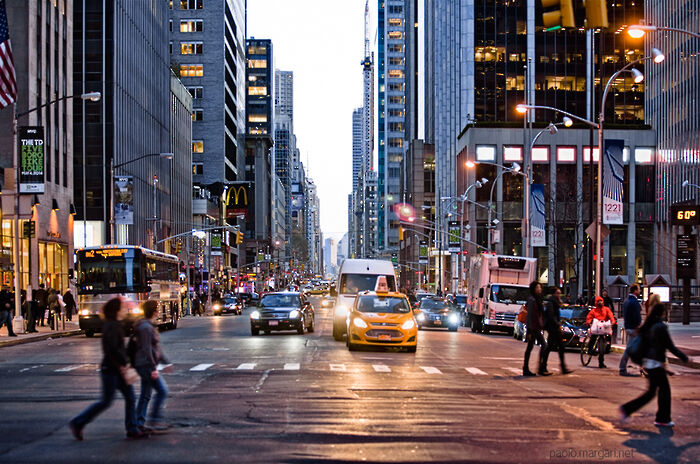Dada: The nonsense soundscape of the Cabaret Voltaire
Thea Sands explores the musical interpretations of the Dadaist movement, one that combined the primitive with the highly intricate

“Gadji beri bimba glandridi laula lonni cadori...” slid from Hugo Ball’s subconscious: “I have invented a new series of verses, verses without words…sound poems...” And with these sound poems Dada pierced music. Reason: rejected; logic: damned. Dadaists were inspired by nonsense and irrationality. In the first decades of the 20th century, Italian Futurists smashed into the now, full steam ahead, whilst Cubists dismantled natural form itself. But it was on the stage of Zürich’s Cabaret Voltaire where nonsense seized the public by the throat and forced music into the mad babble of sound poetry.
“The anarchists and nihilists broke down definition”
Author of the 1916 Dada Manifesto and founder of the Cabaret Voltaire, Ball declared that its aim was “to remind the world that there are people of independent minds – beyond war and nationalism...” The Cabaret Voltaire was a centre for artists and writers to experiment in performances of spoken word, dance and music. Raucous soirees consumed the night. Chaotic, confusing and brutal, they reacted against cultural and intellectual conformity in art and society after the devastation of World War One. The anchor of the arts cracked off its ship and was lost to the all-consuming ocean: art became unstuck. Music abandoned tonality, Picasso’s cubism mangled the human form and Dada smashed conformity, rules and regulations, picking apart the polystyrene walls encircling art that separated it into an autonomous domain. Processes using non-artistic materials expanded the form into an all-encompassing ‘functional anarchism’, as Jed Rasula calls it. The anarchists and nihilists broke down definition, dragged art-making and music-making off the umpire’s shackled pedestal and turned it into senseless art and senseless music for a senseless war-torn world.
Emanating from the Futurists’ manifesto Art of Noises (1913), Richard Huelsenbeck described Dadaist music in his 1920 history of Dada: “Dada music was bruitist, enamoured of raw sound, and could consist in simultaneous chanting of nonsense syllables or shouts… Dada ‘loves the noises of the Métro’.” This self-implosion of music into ‘non-music’ etched into experimental composition. Edgard Varèse’s ‘liberation of sound’ merged with the absurdist art of Marcel Duchamp and Francis Picabia. ‘Sound makers’ shook up Varèse’s music with whistles, rattles and sirens reflecting sounds of the everyday. Marcel Duchamp’s self-proclaimed ‘readymades’ – a signed urinal (Fountain 1917), A Bicycle Wheel (1913) – echoed Varèse’s noises of the everyday, ridding art of subjectivity. American composer George Antheil furthered this mechanical ideology in his Ballet Mécanique of 1923, written for percussion and non-musical mechanical objects, effectively ‘readymades’, indifferent with no aesthetic emotion.
Dadaists developed new artistic techniques and effects. Pierre Schaeffer’s Musique Concrete adopted these same everyday, ordinary soundscapes, using fragments that already existed in reality, creating not just music but ‘sound objects’. John Cage’s Living Room Music (1940) furthered this. Scored for performers playing household objects, furniture and parts of the room’s architecture, it framed the ordinarily unnoticed everyday as art. Futurist Antonio Russolo’s 1921 composition Corale and Serenata sounds like a traditional march but is filled with roaring that shadows orchestration, like a huge industrial engine. Ball’s 1916 Karawane follows only a trio of chanting vocalists growing louder in unison. Tristan Tzara’s L’amiral cherche une maison à louer of 1916 exuded exuberant comedy with whizzing, banging sound effects.
Erik Satie collaborated with Picasso on productions like the ballet Parade (1916-17) which was a parody of itself. Satie used sound collages – an orchestral suite with passages for piano and siren to confuse. These effects of collage, cut-ups, photomontage, readymades and performance art formed the basis for Dadaist reaction. Photomontage, as invented by John Heartfield and George Grosz, served as a device for social commentary, mashing up images of the debauched ruling classes and forcing them out into mass media. Similar followed in Dadaist sound poetry which reimaged sound, introduced extinct languages, and noise. According Tristan Tzara, to make a Dadaist poem one is instructed to:
1. Take a newspaper and scissors. 2. Choose an article of the length you want to make your poem. 3. Cut out the article. 4. Carefully cut out each of the words that makes up this article and put them all in a bag. 5. Shake gently. 6. Take out each cutting one after the other. 7. Copy conscientiously in the order in which they left the bag. 8. The poem will resemble you.
It’s all up to chance. These poems were divided into three categories: Bruitist: phonetic; Simultaneous: read in different languages, with different rhythms, tonalities, by different people at the same time; and Movement Poems: accompanied by primitive movements.
These ideas are all rooted in satire. Grosz said Dadaist art was intended as a protest “against this world of mutual destruction.” Calling for an abandonment of sincerity and meaning. The work of Dadaists was a critique of the bourgeois, ruling elite. Ball wanted to “shock anyone who regarded all this civilized carnage as a triumph of European intelligence.” Francis Picabia stuck a stuffed monkey to a board labelling it a portrait of Cézanne. These absurdities reflected the ridicule of war itself, exemplified by Laurent Le Bon: “Dada explains the war more than the war explains Dada.”
Andy Warhol, Frank Zappa, The Sex Pistols, David Shrigley and Lady Gaga trace the same anti-art sentiments of Dadaism, celebrating nonsense. Although the Nazis tried to kill Dada, damning it as degenerate – ‘Entartete Kunst’ – this only amplified the spirit of rebellion after World War Two, letting postmodern indifference flourish, permeating art and music today
 News / Cambridge academics stand out in King’s 2026 Honours List2 January 2026
News / Cambridge academics stand out in King’s 2026 Honours List2 January 2026 Interviews / You don’t need to peak at Cambridge, says Robin Harding31 December 2025
Interviews / You don’t need to peak at Cambridge, says Robin Harding31 December 2025 Comment / What happened to men at Cambridge?31 December 2025
Comment / What happened to men at Cambridge?31 December 2025 News / Varsity’s biggest stories of 202531 December 2025
News / Varsity’s biggest stories of 202531 December 2025 Features / “It’s a momentary expression of rage”: reforming democracy from Cambridge4 January 2026
Features / “It’s a momentary expression of rage”: reforming democracy from Cambridge4 January 2026










